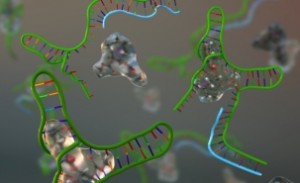Michael Berger has written a March 10, 2015 Nanowerk spotlight article reviewing nanomedicine’s progress or lack thereof (Note: Links have been removed),
In early 2003, the European Science Foundation launched its Scientific Forward Look on Nanomedicine, a foresight study (report here ;pdf) and in 2004, the U.S. National Institute[s] of Health (NIH) published its Roadmap (now Common Fund) of the Nanomedicine Initiative. This program began in 2005 with a national network of eight Nanomedicine Development Centers. Now, in the second half of this 10-year program, the four centers best positioned to effectively apply their findings to translational studies were selected to continue receiving support.
A generally accepted definition of nanomedicine refers to highly specific medical intervention at the molecular scale for curing disease or repairing damaged tissues, such as bone, muscle, or nerve.
Much of Berger’s article is based on Subbu Venkatraman’s, Director of the NTU (Nanyang Technological University)-Northwestern Nanomedicine Institute in Singapore, paper, Has nanomedicine lived up to its promise?, 2014 Nanotechnology 25 372501 doi:10.1088/0957-4484/25/37/372501 (Note: Links have been removed),
… Historically, the approval of Doxil as the very first nanotherapeutic product in 1995 is generally regarded as the dawn of nanomedicine for human use. Since then, research activity in this area has been frenetic, with, for example, 2000 patents being generated in 2003, in addition to 1200 papers [2]. In the same time period, a total of 207 companies were involved in developing nanomedicinal products in diagnostics, imaging, drug delivery and implants. About 38 products loosely classified as nanomedicine products were in fact approved by 2004. Out of these, however, a number of products (five in all) were based on PEG-ylated proteins, which strictly speaking, are not so much nanomedicine products as molecular therapeutics. Nevertheless, the promise of nanomedicine was being translated into funding for small companies, and into clinical success, so that by 2013, the number of approved products had reached 54 in all, with another 150 in various stages of clinical trials [3]. The number of companies and institutions had risen to 241 (including research centres that were working on nanomedicine). A PubMed search on articles relating to nanomedicine shows 7400 hits over 10 years, of which 1874 were published in 2013 alone. Similarly, the US patent office database shows 409 patents (since 1976) that were granted in nanomedicine, with another 679 applications awaiting approval. So judging by research activity and funding the field of nanomedicine has been very fertile; however, when we use the yardstick of clinical success and paradigm shifts in treatment, the results appear more modest.
Both Berger’s spotlight article and Venkatraman’s review provide interesting reading and neither is especially long.
